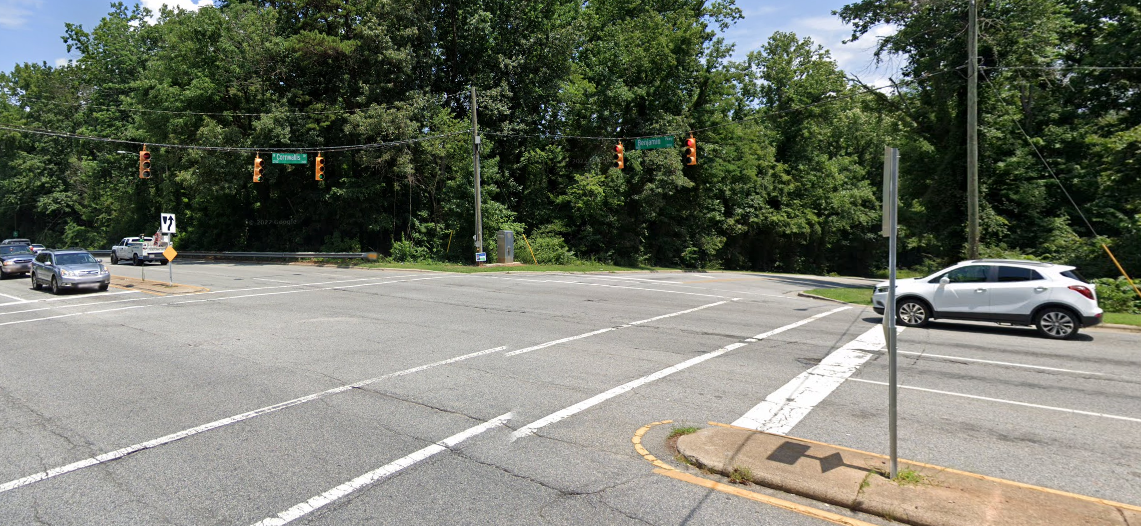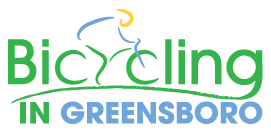|

BIG, NCDOT, and the Benjamin Pkwy Proposal
The following is an example of a BIG advocacy campaign that worked very well to keep a car-centric project from moving forward. The project would have made cycling and walking there very dangerous and made for a noisier, less safe environment for area residents. Speeds and the number of motorists on Benjamin Parkway and the connector roads would have likely increased, decreasing safety for motorists too. Moreover, the Greensboro Department of Transportation would have had a street project they did not want and one that would have been akin to building a wall in the center of our city's bicycling network, a network that is in large part a product of their efforts. Fortunately, the hard work and dedication of our Advocacy Committee panned out and the project was removed. The following text starts with essential background information followed by a brief description of the BIG Advocacy Committee's success getting the project thrown out.
The Federal government requires that states create a 10 year transportation plan and that it is updated. every two years. Officially called a State Transportation Improvement Plan (STIP) , they tend to be strategic and detailed. A STIP's purpose is to identify transportation projects and where funding will come from. This enables government officials to make sure projects are going to mesh with the larger transportation-related visions and goals at three levels of government: local, regional, and federal.
The NC STIP is typically the product of the NC Department of Transportation (NCDOT) staff working closely with the metropolitan planning organizations (MPO) and local transportation departments throughout the state to choose which projects are included. However, the particular project that we were adamantly opposed to was chosen because NCDOT had a federal grant opportunity that needed to be assigned to a project. The funding offered was use-it-or-lose-it and would not have been given to NCDOT without a project specified. The grant had a specific purpose and aimed to decrease motorists in conflict with other motorists and other forms of transportation. Benjamin Parkway between Cornwallis and Pembroke was chosen and then designed in one of the only ways it could have been designed to comply with all the highly focused stipulations that the grant required.
The street design that NCDOT planned for Benjamin Pkwy included two Reduced Conflict Intersections where both Cornwallis and Pembroke intersect Benjamin. For a motorist to continue straight on Cornwallis, the driver would have to make a right turn on to Benjamin, merge into the left lane, make a left on Pembroke, and continue straight on Pembroke (Pembroke runs parallel to Cornwallis.) Pembroke would have required the same, with motorists having to make a left on Cornwallis. Pedestrians would have had to cross in a "z" pattern across an intersection that is seven or eight lanes wide. For bicyclists, this would have meant following the same street pattern as motorists, including merging to the left lane with drivers who are all in the process of doing the same. The only other option for bicyclists would have been getting off the bike and walking the bike across the intersection as a pedestrian.
The plan included adding an additional westbound lane and asked the public to choose to keep the wide shoulders, like the ones already in place, or to choose a sidewalk along this same stretch. The committee opposed the additional lane and the sidewalk, as the latter would not have functioned as sidewalks should function.. To learn why BIG opposed adding a lane, why the sidewalk was not a good idea, and for all the other reasons for opposition to the Benjamin proposal, please follow the following link: https://bikegso.org/page-1860170
The Advocacy Committee dedicated approximately a month to advocating against the draft Benjamin Pkwy proposal. Members met as a group to strategize, participated in public comment opportunities, met with key decision makers, spread the word through various platforms, encouraged the public to submit written comments, and spoke at public meetings. On November 16th, GDOT publicly announced at a Transit Advisory Committee MPO meeting that NCDOT had pulled the project from NC STIP as a result of negative feedback - quite the victory for our Advocacy Committee and the area bicyclists whose interests the committee represents.
Are you interested in doing your part to transform Greater Greensboro into a metropolitan area with safe, connected public roads for bicyclists? If so, consider joining a BIG Advocacy Committee meeting! Please email Projects Coordinator Nicole Lindahl at Nicole.Lindahl@BikeGSO.org to learn more.
